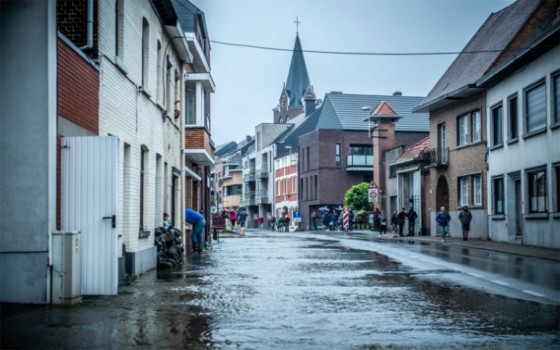
Report: Half of the world's population faces water stress, and scarcity threatens 25 countries around the world,,,Especially in the Middle East and North Africa

- Europe and Arabs
- Sunday , 20 August 2023 9:32 AM GMT
Berlin - Washington: Agencies
A recent report published by German media showed that nearly half of the Earth's population, about four billion people, live with a high level of water stress for at least one month of the year.
The World Resources Institute (WRI), a global research organization based in Washington, warned in its latest report that 25 countries in the world, comprising a quarter of the Earth's population, are threatened with water scarcity, due to the high stress of their available water resources.
According to the report, this situation leads to imminent risks to people’s jobs, health, agricultural crops, livestock rearing, and energy security. The report also warns that, in the absence of effective water management, population growth, economic activities, and climate change will exacerbate water stress. .
In the definition that a country is facing "severe water stress", it means that it uses at least 80% of its available supplies, while "high water stress" means that it withdraws 40% of its supplies.
According to the report's data, the regions that suffer the most from water stress are: the Middle East and North Africa, where 83% of the population is exposed to very high water stress, and South Asia, where the percentage drops to 74%.
According to the report, this situation prompted many governments to take measures, such as: the periodic closing of taps, in an effort to deal with short-term drought and the risk of running out of water. According to the report, 25 countries around the world now suffer from very high water stress annually, including 15 Arab countries.
The cause of the stress is the low supply versus the high demand for water for agricultural, industrial and domestic use.
With an expected increase in global water demand by 20-25% by 2050, according to estimates, the proportion of the population living with water stress will rise to 100%.
The report shows that the effects of this will not only affect consumers and industries that depend on water, but also threaten political stability in parts of the world. In any case, the water shortage will directly affect the industrial, energy and agricultural sectors.
The closest example to this is what happened in India, when a shortage of cooling water for thermal power plants between 2017 and 2021 led to the loss of enough electricity to supply 1.5 million households for five years.
According to the Global Commission on Adaptation, failure of water management policies would lead to GDP losses in India, China, and Central Asia, by 7 to 12 percent, and by 6 percent in most parts of Africa by 2050.
The report states that the biggest challenge facing the world will be feeding nearly 10 billion people expected by 2050, in parallel with the increase in water stress, the effects of climate change, droughts, and floods.
The report provides advice on adopting better water management policies, through the use of technologies such as: water-depleting turf removal, water desalination, wastewater treatment and reuse, economical irrigation methods, and switching to less water-intensive crops.
It also recommends protecting wetlands, mangroves, and forests, as they improve water quality and help with resilience to droughts and floods.
The report highlights that effective water management contributes to achieving prosperity even in light of water scarcity, which is what Singapore and the US city of Las Vegas have already succeeded in.
As for the computational cost to the world, according to estimates, it may not exceed 1% of the gross domestic product, or an amount of 29 cents per day per person between 2015 and 2030.












No Comments Found